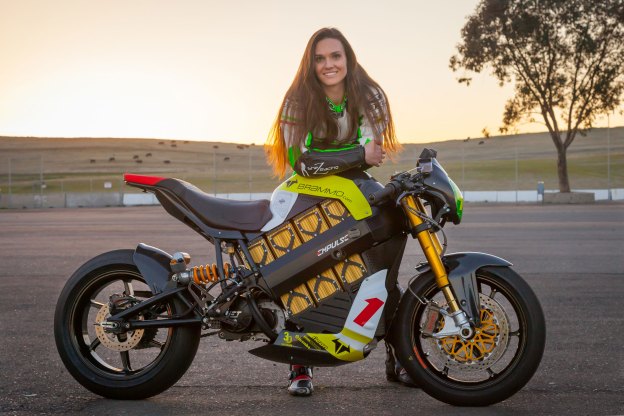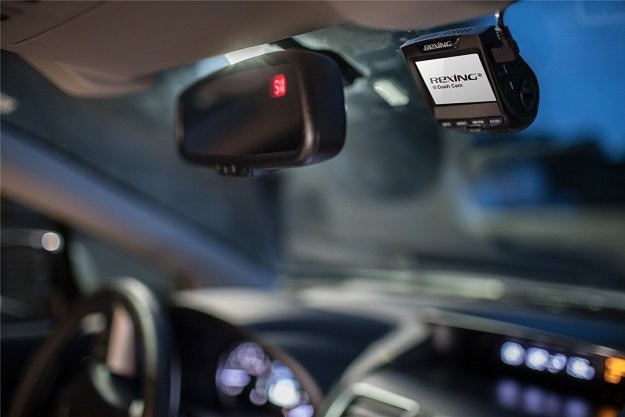
In a history-making move for electric vehicles (motorcycles in particular), ebike maker Brammo says it has given the green light for racers to take its Empulse electric bikes, and go head-to-head with their gas-powered brethren (forefathers?) in a dozen AFM races this year.
In a press release, Brian Wismann, Director of Product Development, said “this announcement is a true milestone in the history of electric motorcycle racing as an opportunity for our bikes to compete amongst their gas-powered counterparts on even terms rather than just as an exhibition or in a single race.”
Since electric bikes began racing just a few years ago, they have been typically relegated to their own class – such as the TTXGP race series – and have not mixed it up with bikes sporting gas engines. Brammo will be supporting team ICON Brammo TTX during the series with race bike helmed by Shelina Moreda, who has been spending track time with race veteran Eric Bostrom.
The races will be held at the Sonoma and Thunderhill tracks.
“It’s going to be a challenge to be competitive as the gas bikes have about 100 years of development time on us, but we’re excited about the chance to pit the Brammo Empulse against the best efforts from Honda, Kawasaki, Suzuki and Yamaha,” Wismann said.
Depending on which bike racers own and have developed, expect Brammo to be active in numerous classes including 500cc machines and even 750 Superbike competitors. Full class details, the race calendar and racer registration information is available at AFM’s website.
Brammo’s Empulse bikes and platform features a liquid-cooled motor connected to a six-speed gearbox, an unusual configuration considering most electric bikes (including Brammo’s Enertia offerings) are single-speed machines. The bike’s battery is located between aluminum frame rails where a traditional bike’s gas tank and motor would reside.
“What caught AFM’s attention about Brammo’s approach was that they were not asking for a separate class, but were instead looking to have a chance for their bikes to compete within the existing class structure and go head to head with gas-powered bikes of similar performance and power-to-weight,” Berto Wooldridge, President of AFM Racing said in the Brammo press release. “We believe this to be a historic moment in motorcycle racing and are happy to have made it possible.”
While bikes powered by liquid dinosaur are still faster than the best electric bikes, the gap has been narrowing quickly. Just a few years ago, it was a struggle for electric bikes to complete a single 37-miles circuit at the iconic Isle of Man race. But last year, all the electric bikes entered finished the race and several topped 100 mph as an average speed for the first time ever around the torturous island circuit.
Digital Trends recently did an extensive review on the Empulse R. Read more here and here.
Top photo: Shelina Moreda will campaign her Brammo Empulse TTX electric racebike against riders on gas-powered bikes in a dozen AFM races this year. Photo courtesy of Brammo.


